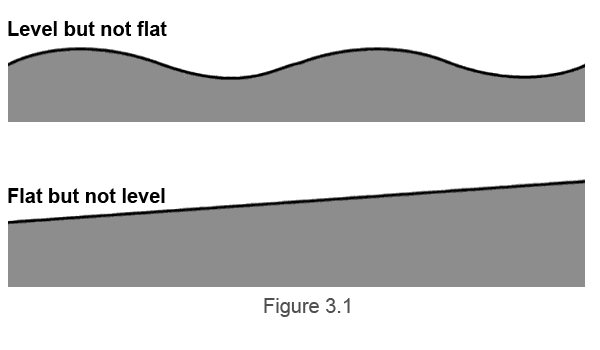The Difference Between a Level Floor and a Flat Floor: What You Need to Know
When planning a flooring project, whether it’s a renovation or new construction, you may encounter two terms that sound similar but have distinct meanings: level and flat. While they’re often used interchangeably, especially in DIY conversations, understanding the difference between a level floor and a flat floor can be crucial to the success of your project. Let’s break down what each term really means and why it matters.
What is a Level Floor?
A level floor is exactly what it sounds like—a floor that is perfectly horizontal, without any slope in any direction. Imagine placing a marble on the floor and watching it stay perfectly still, without rolling in any direction. That’s what a level floor achieves.
To determine whether a floor is level, contractors use tools like laser levels or spirit levels to measure whether the floor is even across its entire surface. A level floor is often crucial for certain types of installations, such as kitchen cabinets, heavy furniture, or specific flooring materials like tile or luxury vinyl. Without a level surface, the installation could be off-kilter, leading to gaps, uneven seams, or even structural issues down the line.
When is a Level Floor Necessary?
Installing cabinets or furniture that need precise alignment
Pouring concrete subfloors for tile or stone
Ensuring proper drainage or water flow in certain areas
What is a Flat Floor?
A flat floor, on the other hand, refers to a surface that doesn’t have any noticeable bumps, dips, or waves. While a flat floor doesn’t necessarily need to be perfectly level (especially in large spaces or on sloped terrain), it should be free from imperfections that would affect the installation of flooring materials.
Flatness is particularly important for materials like hardwood, laminate, or epoxy coatings, where any dips or rises in the floor can cause the material to bend, buckle, or wear unevenly over time. Even if a floor has a slight slope (for drainage in basements or exterior areas, for example), it can still be considered flat if there are no visible imperfections across its surface.
When is a Flat Floor Necessary?
Installing hardwood, laminate, or vinyl plank flooring
Applying epoxy floor coatings
Ensuring smooth transitions between rooms or different types of flooring
Key Differences Between Level and Flat Floors
Measurement Focus:
A level floor is concerned with achieving an even, horizontal surface across the entire floor.
A flat floor focuses on the smoothness and consistency of the surface, free from bumps or dips, without necessarily being perfectly level.
Application:
A level floor is often needed for structural integrity and precise installations (cabinets, tile).
A flat floor is essential for aesthetic finishes and materials that require a smooth surface (hardwood, laminate, epoxy).
Tolerances:
A floor can be flat but not level, especially in spaces that are designed to have a slight slope (such as basements or exterior patios).
Conversely, a floor can be level but not flat if it has minor imperfections or uneven spots.
Why Do These Differences Matter?
Understanding the difference between a level and flat floor helps you communicate more effectively with contractors and ensures your project meets your specific needs. For example, if you’re installing a new epoxy floor, you may need to prioritize flatness to avoid imperfections in the final finish. On the other hand, if you're putting in kitchen cabinets, ensuring the floor is perfectly level will be critical to avoid misalignment.
At Aston Stuart, we specialize in both floor leveling and flattening services. Whether you need to correct structural sloping or smooth out imperfections for a flawless finish, our team has the expertise to ensure your floor meets the demands of your project.
In flooring projects, both level and flat floors have their own importance depending on the installation requirements. Understanding these differences can save you from potential issues down the road and ensure a successful, long-lasting installation. Whether your goal is achieving a perfectly level surface for precise construction or ensuring a smooth, flat floor for aesthetic flooring, Aston Stuart is here to help.
Contact us today to discuss your floor leveling or flattening needs and get started on your project with confidence!




